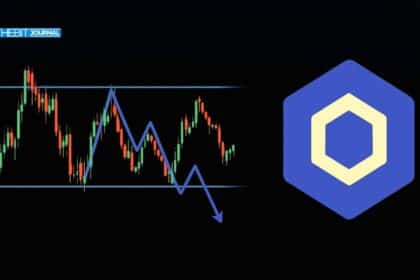In early August 2025, crypto market rattles by an enormous decline when leveraged long bets totaling more than $600 million were wiped out, precipitating a fast and steep correction. Bitcoin fell to roughly $115,200, while Dogecoin, Solana, and XRP all dropped over 6%.
This crypto market crash sent shockwaves across the sector, emphasizing both the dangers of over-leverage and the increasing complexity of institutional dynamics.
Crypto Market Crash and Liquidation Frenzy: $630 Million in Long Bets Sold in a Flash
Over the last hours, more than $630 million in leveraged long positions have been forced closed on key cryptocurrency exchanges, with more than $580 million related to bullish bets.
Bitcoin endured around $140 million of that, but it remained remarkably durable, maintaining its supremacy even as lesser cryptocurrencies fell. Ethereum long holdings were also liquidated in massive numbers, with the single largest ETH liquidation on Binance totaling $13.7 million.
Altcoin collapse accelerates while BTC maintains support.
In crypto market crash, Bitcoin’s plunge below $115K was a 2‑3% drop from recent highs, but altcoins were impacted worse. XRP plummeted by around 6-8%, dropping below $3, as resistance at $3.17 spurred strong selling. Solana fell toward $170, while Dogecoin sank to around $0.21.
Analysts ascribe the difference to risk rotation and liquidation cascades in smaller, more volatile coins. Despite price weakening, on-chain data indicated significant institutional inflows, 310 million XRP tokens were accumulated even during distribution.

Macroeconomic Tensions and Tariff Pressure Add Fuel to the Sell-off
A higher US dollar (DXY reaching 100) and further tariff pronouncements exacerbated inflation worries and depressed risk appetite. Policymaker uncertainty over US interest rates fueled volatility, scaring leveraged traders. Furthermore, automated systems worsened the drop, as cascading liquidations triggered stop-loss orders and further selling in minutes.
A glimpse into the future: structural resilience in the midst of chaos
Looking ahead, the crypto market crash might act as a structural stress test. Bitcoin’s ability to stabilize around $115K underscores its rising status as a store of value asset. Futures-based ETF inflows and institutional accumulation indicate that volatility will decrease over time.

As markets develop, large-scale liquidations may become more manageable, thanks to improved infrastructure and risk frameworks. Industry veterans are looking for evidence of prolonged BTC dominance above 60%, since lower coin volatility combined with increased liquidity might redefine long-term stability.
Summary
This week’s crypto market crash was harsh yet informative. With more than $600 million liquidated, the incident demonstrated how concentrated debt and macroeconomic shocks may increase volatility.
However, Bitcoin’s relative stability, paired with selective institutional investment in altcoins like as XRP, indicates a mature ecosystem. While traders should proceed with care, the overall trend appears to be intact, assuming crucial support levels hold. Market players should reassess their risk management methods and actively follow regulatory and macroeconomic policy movements.
FAQs
What triggered the crypto market crash?
The crash stemmed from rapid liquidations of leveraged long positions—mostly on BTC and ETH—triggered by sharp price declines and macroeconomic uncertainty.
Why did altcoins suffer more than Bitcoin?
Altcoins like XRP, SOL, and DOGE are more sensitive to market swings and leverage squeezes. Bitcoin’s dominance allowed it to weather the blow relatively better.
Is Bitcoin’s uptrend broken?
Not yet. Analysts say if BTC holds above the $115,000 support zone, its long-term uptrend remains viable despite the recent downturn.
Should traders reduce leverage exposure?
Yes. The crash illustrates the risk of high leverage. Traders are advised to reassess risk protocols and use more conservative exposure strategies.
Glossary of Key Terms
Liquidation: The forced closure of a leveraged position due to insufficient collateral, often triggering rapid price movements.
Long Position: A bet that the price of an asset will rise; common in leveraged trading that magnifies both gains and losses.
Dominance: The share of Bitcoin’s market capitalization relative to total crypto market cap; shifts reflect capital rotation.
Macro Pressures: External economic forces like interest rates and tariffs that influence risk asset trading psychology.
Support Level: A price threshold where demand historically prevents further downside and stabilizes markets.




























